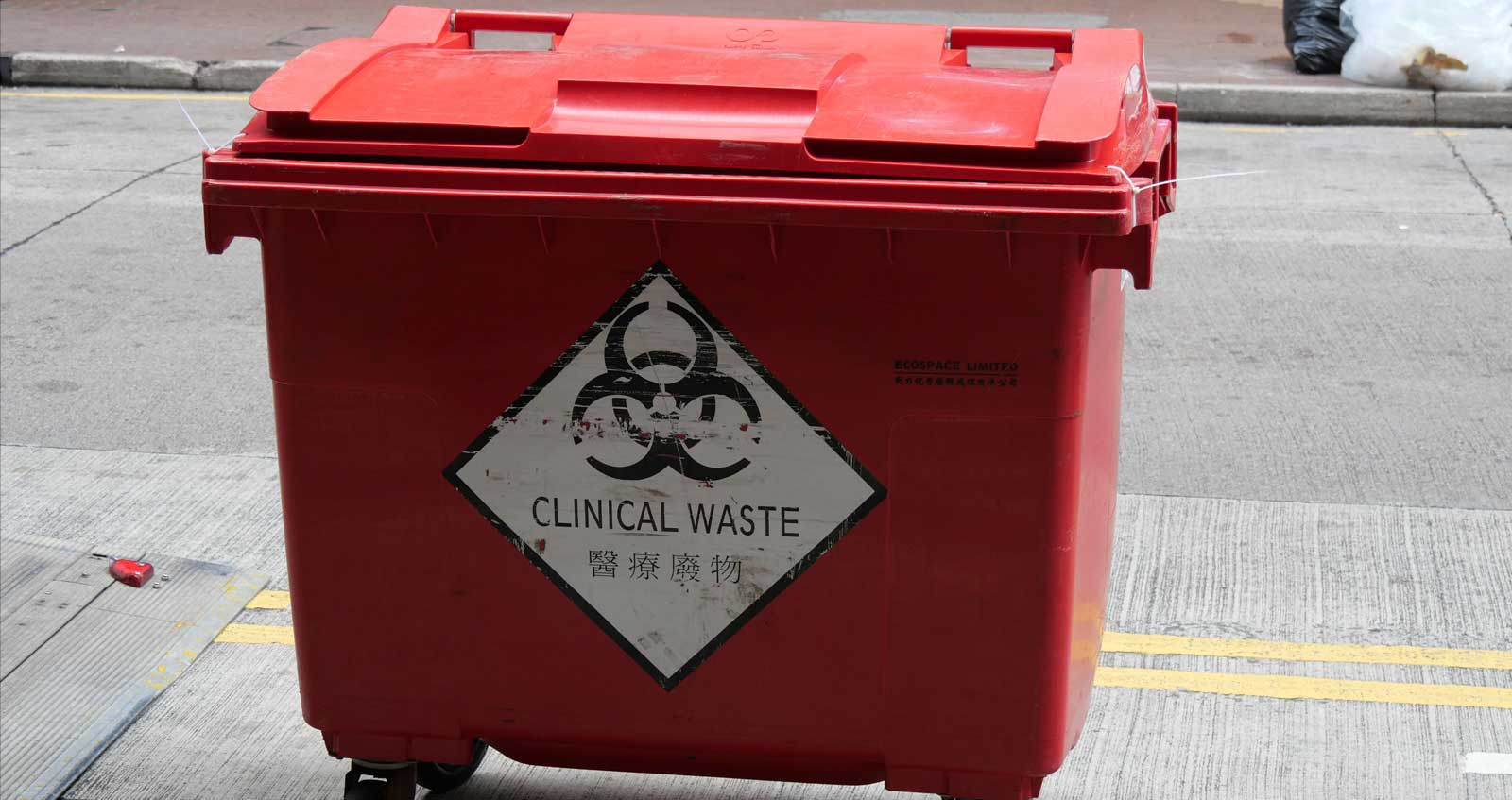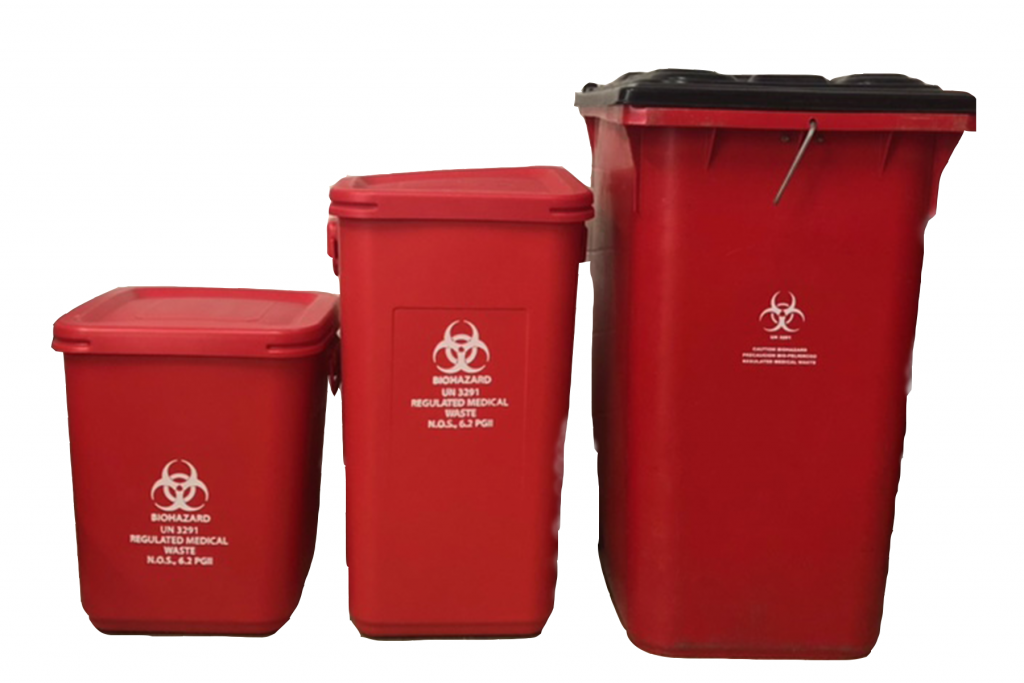Medical Waste Removal Mastery: Where Service Excellence Satisfies Health And Wellness Requirements
Wiki Article
Reliable and Eco Friendly Medical Garbage Disposal Solutions
In the ever-evolving area of healthcare, the problem of medical waste disposal continues to be a topic of extremely important importance. As hospitals, centers, and other health care centers strive to offer top quality patient care, they have to also deal with the obstacle of successfully and sensibly disposing of their waste.Waste Segregation Practices
Efficient waste partition techniques are important to guarantee the safe and appropriate disposal of clinical waste. Medical waste, which includes products infected with possibly infectious substances, should be handled in a way that reduces the danger of damage to both public health and wellness and the atmosphere. Correct waste segregation plays an important function in accomplishing this objective.Waste partition entails the separation of different sorts of waste based upon their characteristics and potential threats. This process ensures that each kind of waste is treated and gotten rid of properly (medical waste disposal services with WasteX). It begins at the factor of generation, where health care facilities should have marked bins and containers for various waste groups, such as sharps, infectious waste, pharmaceutical waste, and non-hazardous waste
By setting apart medical waste at the resource, healthcare service providers can avoid cross-contamination and decrease the threat of exposure to transmittable agents. This technique also promotes the recycling and recovery of particular materials. Segregating and reusing tidy plastics and glass decreases the need for raw products and reduces the ecological impact of medical waste disposal.

Autoclaving and Sanitation Strategies
In order to make certain the risk-free and correct disposal of medical waste adhering to efficient waste partition methods, medical care centers should use autoclaving and sterilization strategies. Autoclaving is a widely utilized technique that utilizes high-pressure vapor to sterilize clinical waste.An additional typically made use of sterilization strategy is chemical sanitation. This includes dealing with the waste with chemicals such as ethylene oxide or hydrogen peroxide, which kill bacteria by interrupting their cellular structure. Chemical sanitation is often utilized for heat-sensitive things or materials that can not withstand the high temperature levels of autoclaving. Nonetheless, it is essential to keep in mind that chemical sanitation calls for proper handling and disposal of the chemicals utilized, as they can be harmful to human wellness and the environment if not handled appropriately.
On-Site Waste Therapy Solutions
Health care facilities have executed on-site waste treatment systems to attend to the disposal of clinical waste in a efficient and secure fashion. These systems supply a convenient and affordable solution for taking care of clinical waste created within the center. On-site waste treatment systems utilize various technologies to dispose and deal with of clinical waste on-site, reducing the requirement for transportation to off-site centers.One typically made use of on-site waste treatment system is the microwave modern technology. One more system is the chemical disinfection innovation, which involves dealing with medical waste with chemicals to eliminate microorganisms and lower its harmful nature. medical waste disposal services with WasteX.
On-site waste therapy systems offer a number of benefits. They get rid of the danger of clinical waste being messed up throughout transport, lowering the possibility for contamination and exposure to hazardous compounds. Furthermore, these systems assist health care centers abide by waste administration guidelines by giving a reliable and hassle-free disposal approach. In addition, on-site therapy systems reduce the total ecological effect of medical waste by reducing transportation and the need for landfill space.
Recycling and Repurposing Efforts
As medical care centers strive for sustainable waste monitoring techniques, they are significantly discovering recycling and repurposing campaigns as a way of minimizing the ecological effect of medical waste. Recycling and repurposing initiatives entail locating ingenious methods to reuse or transform clinical waste right into new products or products. This not only aids to decrease the quantity of waste that winds up in incinerators or land fills but likewise minimizes the usage of resources and energy needed for making new products.
One example of reusing in the healthcare industry is the reprocessing of single-use clinical devices. This not just lowers the amount of waste created but likewise conserves healthcare centers substantial prices associated with buying new tools.
An additional recycling initiative includes the recycling of plastic containers, such as drug containers or syringe housings. These containers can be gathered, arranged, and sent out to reusing facilities where they are processed, melted down, and changed right into new plastic items. This aids to conserve resources and minimize the need for virgin plastic manufacturing.
Along with recycling, view publisher site repurposing initiatives involve discovering different usages for clinical waste. Shredded paper waste from clinical records or product packaging products can be repurposed as bed linens product for pets or as insulation product. Likewise, natural waste such as food scraps from medical care centers can be composted and made use of as plant food in yards or farming areas.

Renewable Energy Solutions
One effective strategy to reducing the ecological effect of health care operations involves implementing renewable power services. Health care facilities, such as clinics and hospitals, eat substantial quantities of power for different purposes, consisting of lights, heating, cooling, and running clinical devices. By transitioning to renewable resource resources, these facilities can significantly lower their carbon impact and add to a more lasting future.

Carrying out renewable resource services in health care centers not just minimizes greenhouse gas exhausts but also uses lasting price financial savings. While the initial financial investment in eco-friendly power infrastructure may be greater, the long-term operational costs of renewable resource systems are substantially lower compared to traditional fossil fuel-based energy sources. Additionally, sustainable power systems are trusted and can provide a continuous and stable power supply, making certain continuous healthcare services even throughout power blackouts or emergency situations.
Verdict
In final thought, implementing environmentally friendly and reliable medical waste disposal remedies is vital for maintaining a sustainable medical care system. By embracing waste segregation techniques, autoclaving and sterilization methods, on-site waste treatment systems, recycling and repurposing campaigns, and renewable power services, medical care facilities can substantially reduce their environmental influence.It starts at the point of generation, where medical care facilities need to have designated bins and containers for various waste categories, such as sharps, contagious waste, pharmaceutical waste, and non-hazardous waste.
In order to make certain the safe and proper disposal of medical waste complying with effective waste segregation techniques, healthcare centers need to use autoclaving and sterilization methods.Health care centers have executed on-site waste therapy systems to resolve the disposal of clinical waste in a effective and risk-free manner. On-site waste treatment systems use different modern technologies to treat and dispose of clinical waste on-site, minimizing the need for transportation to off-site facilities.
As health care facilities aim for lasting waste management practices, they are increasingly exploring recycling and repurposing initiatives as a means of decreasing the environmental effect of clinical waste. - medical waste removal services
Report this wiki page